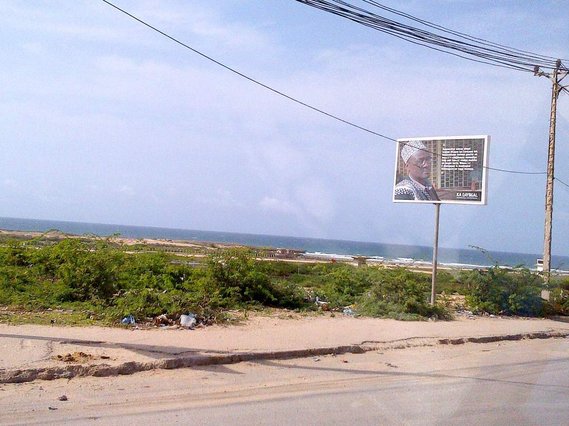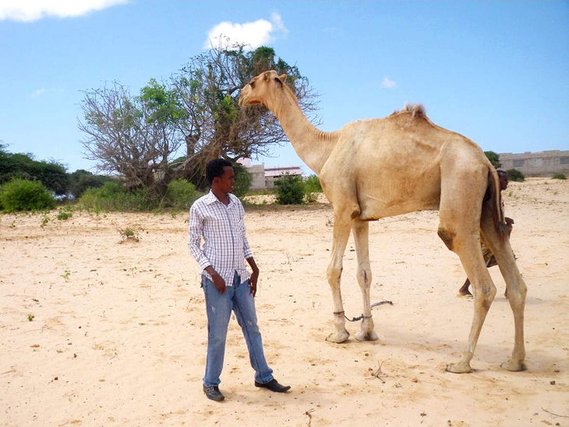The effect of more that two decades of conflict: Project
Somalia, or as presently called, the Federal Republic of Somalia, is a country located in the Horn of Africa, bordered by Kenya, Ethiopia, Djibouti, the Indian Ocean and the Gulf of Aden. The population of Somalia is estimated to be about 10 million, mostly nomads attending to their livestock, and moving from one place to another in continuous search for water and better grazing areas, a potential cause of conflict among the various tribal groups of which Somalis are made, each wanting to secure for themselves the limited water and grazing resources. In the past, such conflicts were limited to these nomadic groups, but in the nineties the tribal conflicts reached the capital, leading to the total destruction of all public institutions and the beginning of war and anarchy, which went for more than two decades, that caused remarkable loss of lives and sufferings, and the almost disfiguration of Mogadiscio, the capital city of Somalia, where, given its importance for the warring parties, most bellic activities took place.
Although security conditions has somehow improved during the last two or so years, thanks to the efforts put in place by the newly established government, with the help of the international community, life in Somalia is still very difficult, if not impossible, as radical militants not wanting a democratically run modern State in Somalia, are still active and carry out terror acts that practically keep the inhabitants of the capital hostages, meaning that only few brave or mad people venture outside their house during late evening and the night.
These are recent images of Mogadiscio and the adjacent areas that I have captured while in Somalia, which are intended to visually show the extent of destructions caused by the more than two-decade conflict, which can make very sad anyone who has known Mogadiscio before the start of the civil war in 1990s, thus witnessing how peaceful the place was, and how well-kept were the streets of the town.
The Dhagaxtuur (The Stone Throwing) monument of Mogadiscio, located opposite the parliament (House of the People), without the stone-throwing statute, which was looted for its copper content immediately after the collapse of General Siyad Barre regime. The Dhagaxtuur monument was to honour the 12th of April 1949 battle in Mogadiscio between Italians armed with guns and pistols, who wanted to reinstate their colonial rule over the South Somalia, which was ended by the Great Britain’s forces defeating the Italian forces that at that time occupied great parts of the Horn of Africa, and the SYL (the Somali Youth League, the political party that led the country to independence), who were armed with only stones, hence the name “stone throwing) of the battle. The Somali word “midnimo” (unity) and flag are also visible.
A much-damaged multi-storey house near Martini Hospital, illegally occupied by many squatters from the Bay region.
A partial view of the former Meat Factory in Hamar Jajab, showing vertical wood pieces erected to close the gap left by the missing entrance gate.
An empty section of the Wadnaha (Heart) Road, except of a cow attracted by a small green vegetation near a wall. It seems that in Mogadisanimals are less likely to be affected by insecurity than the humans
The beginning of the the empty Makka Al-Mukarrama road, behind which can be seen the upper parts of the Islamic Solidarity Mosque, built by the Saudi Arabia, as well as the dark clouds that seem foretelling a very welcome rainfall.
Two men riding a motorcycle on a devastated Hodan road. Motorcycles are very popular in Mogadiscio, for the low fuel consumption and the ability of going through badly damaged roads unsuitable for the of normal vehicles.
An image of a commercial building in Madina district, with a watchman sitting in front of it to secure the place.
An empty section of the Makka Al-Mukarrama road, one of the most important and busiest roads of the capital that connects the centre of town to the airport, and goats taking care of the cleaning of the sidewalk.
An image of a residential wall in Hamar Jajab opposite the formerly British Embassy, with a door half-missing and entrance covered by dirt.
An area between Mogadiscio and the Afgoye city, which is located some thirty kilometres to the west of Mogadiscio, with a young man looking with interest a camel with the two fore legs tied (qabiran) so to prevent it from straying away. The owner of the camel hides behind it, to avoid been pictured.
A countryside section between Mogadiscio and Afgoye city, with a cleared area in middle of which a huge crater can be seen, apparently resulting from an exceptionally powerful explosion.
A grassland area outside Mogadiscio with low trees during the rain season, as indicated by the water pond in the middle of the area, and the above heavy clouds, telling of probable coming rainfall.
An area between Mogadiscio and the Afgoye city that is presently hosting some many former inhabitants of the capital who were forced to leave their homes to escape the prolonged fighting in the capital between the Al-Shabaab militias, on one side, and the government and the Ethiopian forces (in the beginning), who were later replaced with African troupes from Uganda and Burundi, on the other. In the background one can see some of the temporary dwellings that such displaced people have erected there, mostly made of iron. sheets, as well the green sky, in indication of no soon expected rains.






























